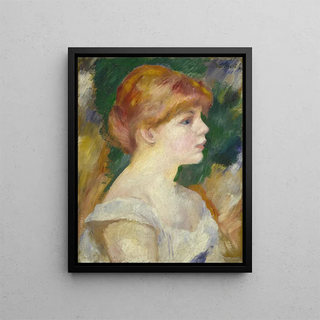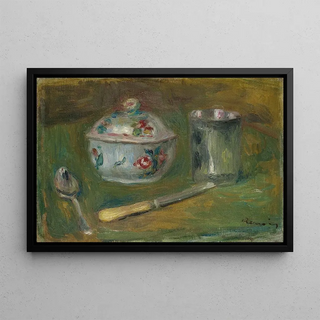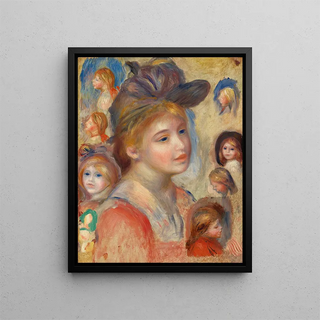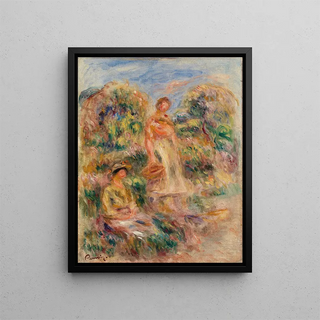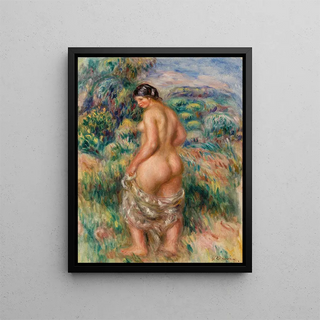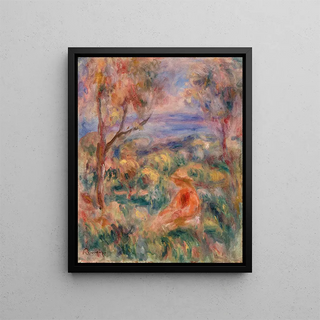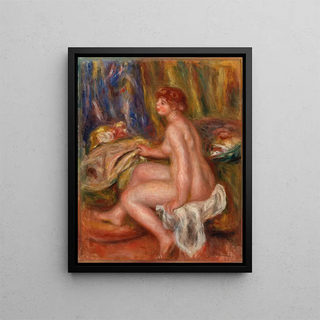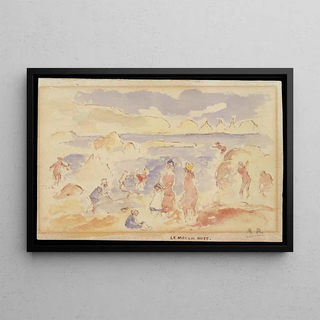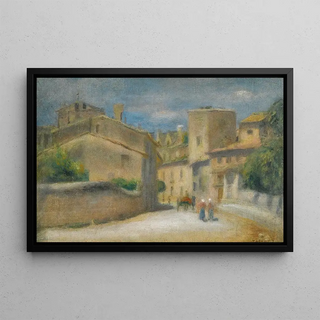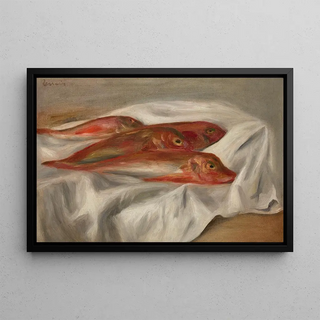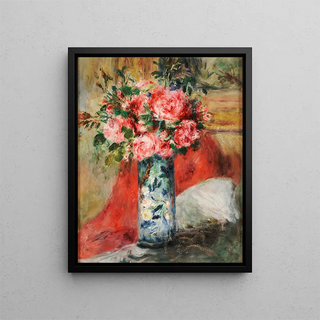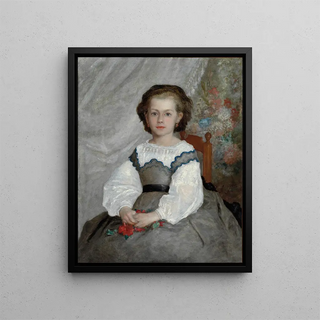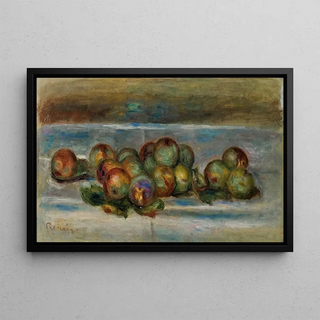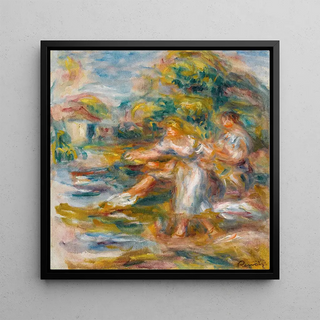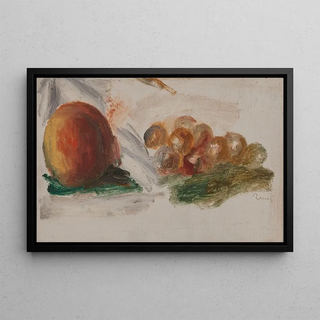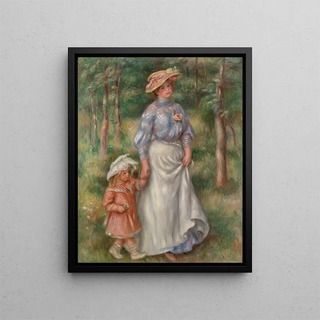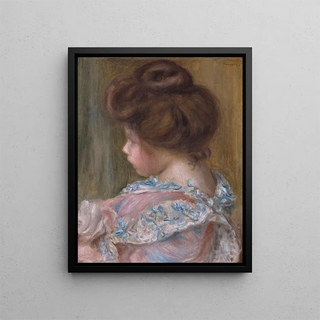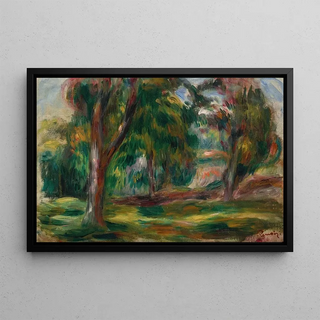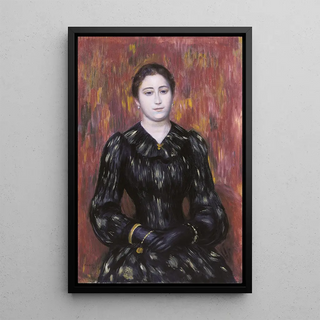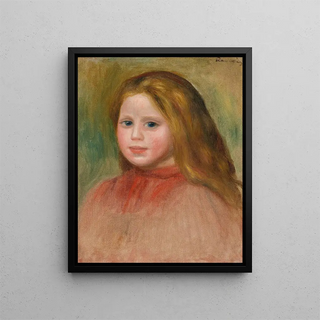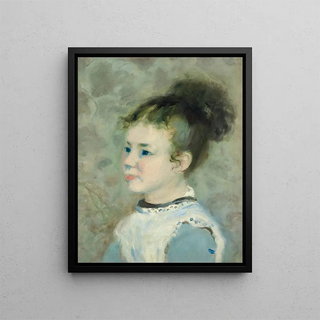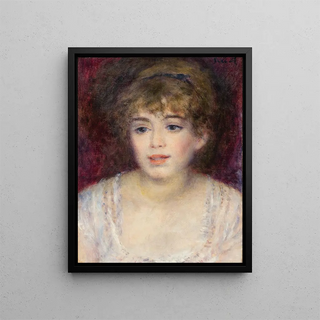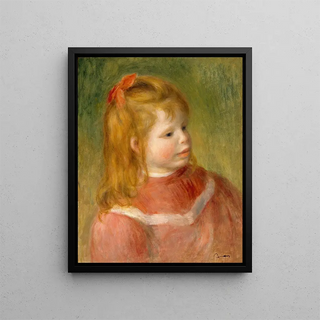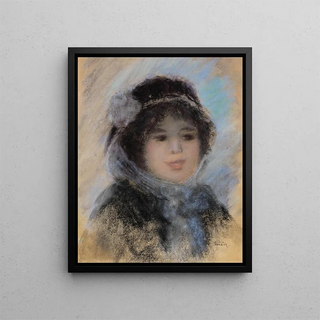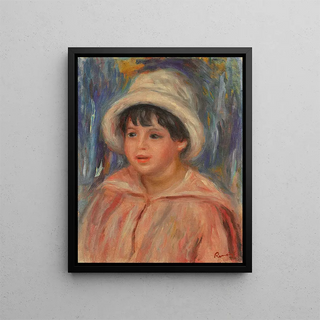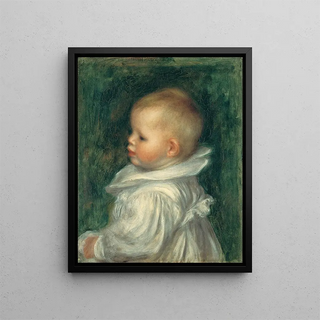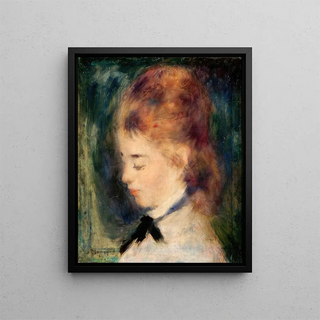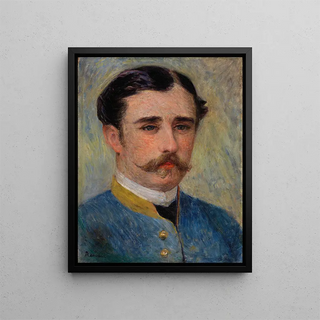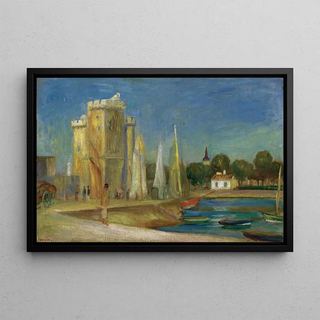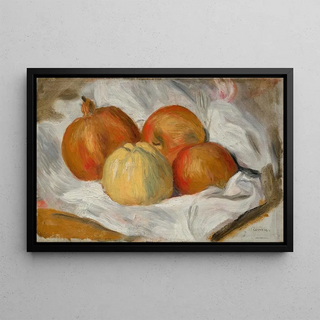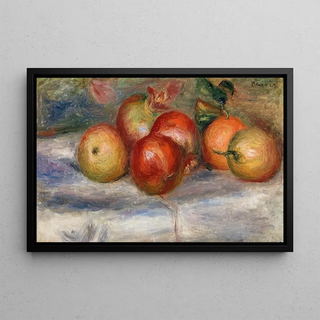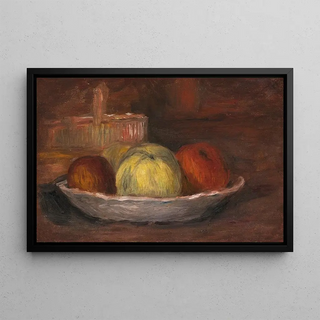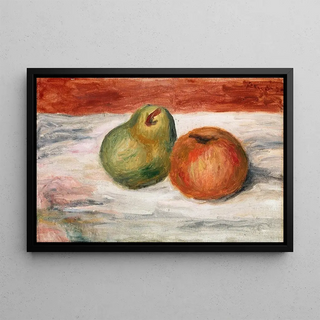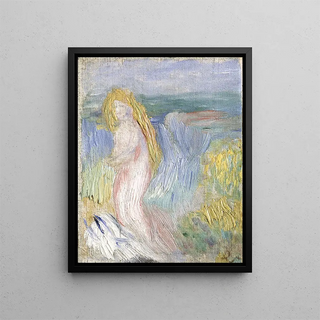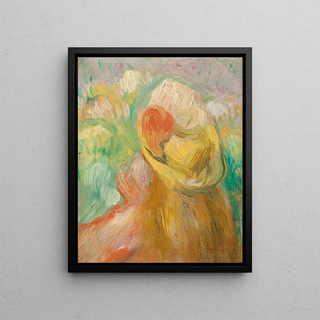Art print Renoir : Découvrez les Tableaux de Pierre-Auguste Renoir
Introduction à Pierre-Auguste Renoir : Le Parcours d'un Maître de l'Impressionnisme
Pierre-Auguste Renoir, peintre impressionniste français né à Limoges en 1841, devient rapidement une figure majeure de l’art moderne. La biographie de Renoir éclaire son parcours artistique et met en lumière les différentes étapes de sa vie. Ce peintre se distingue par sa capacité unique à capturer la joie de vivre française à travers des scènes lumineuses révolutionnaires. Avant d’adopter l’impressionnisme, Renoir appartient à la tradition des beaux arts, ayant suivi des cours à l’école des beaux arts de Paris, ce qui a fortement influencé sa technique. Sa rencontre et sa collaboration avec Claude Monet marquent ses débuts dans l’impressionnisme, mouvement auquel il apporte une contribution essentielle. L’atelier de Renoir, notamment à Essoyes, joue un rôle central dans son processus créatif et l’évolution de son style. Il adopte l’impressionnisme avant de s’orienter vers d’autres styles, marquant ainsi une transition importante dans sa carrière. La couleur vive et la touche délicate caractérisent ses œuvres, donnant vie à ses scènes de la vie quotidienne. La grâce transparaît dans ses portraits et scènes de vie, conférant élégance et sensualité à ses tableaux. Ses fils, qui ont parfois servi de modèles, ont influencé certaines de ses œuvres et révèlent l’importance de la famille dans sa création. La fin de sa vie, marquée par sa mort en 1919, coïncide avec une évolution stylistique vers des œuvres plus réalistes. L’histoire personnelle et artistique de Renoir se reflète dans chacune de ses œuvres, chaque page de sa carrière représentant une étape clé de son évolution. Chaque partie de son œuvre explore des thèmes variés, de la maternité aux scènes de la vie quotidienne. L’influence d’Ingres se fait sentir dans sa période classique, notamment dans la maîtrise du dessin et de la forme. Paul Durand-Ruel, marchand d’art, joue un rôle déterminant dans la diffusion internationale de son art. L’action et le mouvement sont omniprésents dans ses tableaux, capturant l’énergie et la vitalité de ses personnages.
Auguste Renoir demonstrates a particular attention to the evolution of French society, captured in his emblematic art prints exhibited in the world's leading museums. The art of Auguste Renoir reveals a painter passionate about the social transformations of France and the emergence of bourgeois modernity. Auguste Renoir establishes himself as a privileged witness of his era, tenderly documenting the simple pleasures of 19th-century French life.
Top 10 of the most Famous Paintings by Pierre-Auguste Renoir
1. Le Déjeuner des Canotiers (1881) - The Iconic Art print
“The Lunch of the Boatmen” remains the most famous work by Auguste Renoir, immortalizing a bourgeois leisure scene where joyful characters move within the safety of modern pleasures. It showcases the action and dynamism of the characters, whose gestures and postures convey the energy and vitality of everyday life. The bright and luminous color, typical of Renoir, illuminates the scene and enhances the feeling of shared happiness. Renoir's delicate and fluid brushwork is particularly visible in this art print, bringing softness and movement to the composition. The meticulous details, such as the light on the faces and the finesse of the fabrics, allow recognition of Renoir's hand and testify to his attention to grace and sensuality. This art print reveals Auguste Renoir's mastery in transforming social observation into sophisticated composition. This Canvas captures the essence of French joie de vivre and bears witness to French artistic genius. The Lunch of the Boatmen perfectly illustrates the characteristic oil on Canvas technique of Auguste Renoir.
2. Bal du Moulin de la Galette (1876) - Dance and Parisian Happiness
“Bal du moulin de la Galette” reveals the social dimension of Auguste Renoir's art, showcasing dance and popular Parisian leisure activities in an atmosphere of collective happiness. The action of the dancers, captured in their fluid and energetic movement, brings the scene to life. The color used by Renoir, bright and luminous, conveys the festive and joyful ambiance of the moment. His touch, delicate and vibrant, gives the work a sense of spontaneity and naturalness. The numerous details present in the composition, such as the play of light on clothing and facial expressions, enrich the scene and demonstrate Renoir’s attention to everyday reality. The grace of the characters, especially in the dancers’ posture and gentle gestures, contributes to the elegance and appeal of the painting. This oil on canvas perfectly illustrates Auguste Renoir’s vision of French democratic pleasures. This composition reflects the spirit of France in social transformation, where dance becomes an expression of modern freedom.
3. Chiffres sur la plage - Classicism and Beauty
“Chiffres sur la plage” capture la fascination d’Auguste Renoir pour la beauté féminine, montrant des femmes dans un paysage idyllique. La femme, source d’inspiration majeure pour Renoir, occupe ici une place centrale. La grâce des corps féminins se manifeste dans la composition, soulignant l’élégance et la sensualité propres à l’artiste. On perçoit dans cette œuvre l’influence d’Ingres, notamment dans la rigueur du dessin et la recherche d’un certain académisme. La touche picturale de Renoir à cette période se distingue par sa délicatesse et sa fluidité, apportant vie et mouvement à la scène. La couleur, particulièrement dans les carnations et le paysage, révèle une palette lumineuse et nuancée qui accentue la lumière naturelle. Enfin, les détails minutieux témoignent de la maîtrise de Renoir, que ce soit dans le rendu des textures, des reflets ou des expressions. Ce tableau illustre l’art d’Auguste Renoir à fusionner tradition classique et modernité impressionniste, révélant sa recherche constante de beauté idéale.
4. The Box Office (1874) - Elegance and Parisian Portraits
"The Box Office" reveals the elegance of Parisian bourgeoisie according to Auguste Renoir, showing an elegant couple in a Parisian theater. The woman, at the center of the composition, embodies the feminine beauty dear to Renoir. This oil on Canvas captures the refined atmosphere of French cultural leisure activities, where the grace of the depicted couple manifests in every gesture. The portrait details, such as the delicacy of the features and the finesse of the accessories, reveal Renoir's sensitivity to subtlety and authenticity. The color, used skillfully, emphasizes luminous effects and the sensuality of the scene. Finally, Renoir's Impressionist touch, visible in the fluidity of the brushstroke and the lightness of the contours, brings this iconic work to life. This painting demonstrates August Renoir's mastery in portraiture and the luminous effects characteristic of Parisian Impressionism.
5. The Swing (1876) - Charm of Bourgeois Life
"The Swing" illustrates Auguste Renoir's art of capturing the intimacy of French bourgeois leisure activities in a Parisian garden. The motion of the swing, with the movement of the characters, brings dynamism and vitality to the scene. The presence of a woman at the center of the painting highlights Renoir's cherished feminine inspiration. The details of the garden, foliage, and composition demonstrate the meticulous attention the artist paid to each element. The grace of the scene is reflected in the elegant posture of the characters and the light atmosphere. This oil on Canvas reveals August Renoir's Impressionist technique for capturing the play of color and light, enhancing the sensuality and beauty of the moment. Finally, Renoir's delicate and fluid Impressionist touch brings this everyday scene to life. The painting showcases August Renoir's ability to transform a simple scene into a poetic composition celebrating French art of living.
6. Young Girls at the Piano (1892) - Family Intimacy
“Young Girls at the Piano” captures the intimacy of French bourgeoisie according to Auguste Renoir, showing two young women in a refined interior. The depiction of the woman and femininity occupies a central place here, illustrating the pursuit of beauty and sensuality characteristic of the artist. Renoir also draws inspiration from his family and sons to infuse a personal and warm dimension into his domestic scenes. The interior details, such as musical instruments and furniture, reflect great attention to authenticity and richness of the composition. The grace of the young girls' gestures, captured with delicacy, enhances the elegance of the scene. The color, bright and luminous, animates the fabrics and contributes to the warm atmosphere of the work. Finally, Renoir's pictorial touch, fluid and subtle, brings the scene to life and allows immediate recognition of his impressionist style.
7. The Reading (1890) - Maternal Tenderness
“The Reading” reveals Auguste Renoir's art of capturing the tenderness of mother-child relationships in French society. The woman, depicted here as a mother, embodies feminine softness and beauty dear to Renoir. The relationship between the mother and her son is at the heart of the scene, illustrating the importance of family in the artist's work. The numerous details, such as the delicacy of gestures and facial expressions, enrich the composition and demonstrate Renoir's attention to the authenticity of his subjects. The grace emanating from this maternal scene enhances the emotion and elegance of the painting. The color, subtly chosen, creates a soft and luminous atmosphere characteristic of Renoir's palette. Finally, Renoir's impressionist touch, visible in the fluidity of the brushstroke and the lightness of the forms, brings this family intimacy scene to life. The painting illustrates Auguste Renoir's impressionist technique applied to themes of childhood and French cultural transmission.
8. The Umbrellas (1881-1886) - Urban Modernity and Style
“Les Parapluies” capture the evolution of Auguste Renoir's style, depicting a Parisian street scene in the rain with a more structured approach. The prominent presence of the woman in the foreground stands out, embodying feminine elegance and modernity in the city. The meticulous details of the street, the Canvas, and passersby reflect Renoir's attention to everyday life. The grace of the characters, perceptible in their posture and interaction, lends a refined atmosphere to the composition. The color, subtly used to represent the rain and light, enhances the scene's vibrancy. Finally, Renoir's impressionist touch, visible in the fluidity of the brushstroke and the delicacy of the effects, brings this iconic work to life.
This oil on Canvas reveals Auguste Renoir's ability to document French urban modernity. The work demonstrates the adaptation of Auguste Renoir's style to the social transformations of Paris.
9. Madame Charpentier and her Children (1878) - Portraits of the Bourgeoisie
“Madame Charpentier and her children” illustrates the art of portraiture according to Auguste Renoir, showing a Parisian bourgeois family in their luxurious interior. The woman, here the mother, occupies a central place, embodying beauty and motherhood, while her sons are depicted with tenderness, emphasizing their role in the family composition. The refined details of the bourgeois interior, such as furniture and decorative objects, reflect Renoir's care in representing everyday life. The grace of the family scene is evident in the elegant posture of the characters and the harmonious atmosphere of the painting. The color, vibrant and luminous, animates the fabrics and contributes to the warm ambiance of the whole. Finally, Renoir's delicate and fluid impressionist touch gives the work a vitality and expressiveness characteristic of his style. This oil on Canvas reveals Auguste Renoir's mastery in painting precious fabrics. The painting bears witness to Auguste Renoir's social recognition among the French high bourgeoisie.
10. The Promenade (1870) - Impressionist Beginnings
“La Promenade” marks the impressionist beginnings of Auguste Renoir, depicting an elegant couple in a luminous landscape. The action of the couple strolling, captured with vibrancy, adds movement and life to the scene. The details of the surrounding landscape, such as the vegetation and filtered light, reflect Renoir's attention to the authenticity of nature. The grace of the depicted couple is evident in their posture and interaction, highlighting the elegance characteristic of the artist. The color used to render the natural light illuminates the scene and emphasizes Renoir's characteristic vivid palette. Finally, Renoir's delicate and fluid impressionist touch gives the overall a vibrant and modern atmosphere. This oil on Canvas reveals the technical evolution of Auguste Renoir towards impressionism. The work demonstrates the influences of Auguste Renoir and his ability to modernize traditional French painting.
Major Themes in Auguste Renoir's Work
Roses and Still Life in Renoir
Auguste Renoir explores floral themes in his works, particularly roses that become a recurring motif in his still life. These compositions reveal Auguste Renoir's art in capturing the ephemeral beauty of French flowers. The painter pays great attention to the meticulous details of petals and leaves, allowing recognition of the delicacy of his work. He also emphasizes the vibrant color of roses in his still life, highlighting the richness of his palette. Finally, Renoir's delicate touch in depicting flowers helps bring his compositions to life, illustrating his fascination with pure colors and natural light on roses.
Paris and Modern Leisure
Parisian modernity plays a predominant role in Auguste Renoir's art. His characters move through cafés and theaters in Paris where urban security redefines contemporary Parisian life. Parisian scenes are often animated by the action and dynamism of the characters, capturing the energy of daily life. Attention is also paid to the details of the cafés and theaters depicted, contributing to the authenticity of his works. Finally, the grace of the characters in these leisure scenes highlights the elegance and sensuality characteristic of Renoir's painting. This exploration of Parisian leisure reveals Auguste Renoir's fascination with French cultural evolution.
The Artistic Evolution of Auguste Renoir: Training and Style
Auguste Renoir begins with a solid training as a porcelain painter in Limoges before dedicating himself entirely to oil painting on Canvas. He also takes courses at the École des Beaux-Arts in Paris, where he benefits from rigorous academic instruction. His passage through the beaux arts profoundly influences his approach, allowing him to master the codes of academic art before refining his personal style. Renoir's studio, notably in Essoyes, plays a central role in his creative process, serving as a place of inspiration and production for his major works. Born into a modest French family, Auguste Renoir develops a fascination with natural light. He fully commits to Impressionism, a movement of which he becomes a pillar, before evolving towards more classical stylistic research, notably under the influence of Ingres, perceptible in works like “Les grandes baigneuses”. Paul Durand-Ruel, a visionary art dealer, greatly contributes to the international dissemination of his work and Impressionism. The end of his Impressionist period marks a transition to more realistic compositions and an exploration of new techniques, illustrating the richness of his artistic evolution.
Artistic Training and Influences of Auguste Renoir
The training of Auguste Renoir combines rigorous artisanal apprenticeship in Limoges with a budding artistic passion. In Paris, he takes courses at the École des Beaux-Arts, where he benefits from an academic education that profoundly influences his style. Auguste Renoir also attends Parisian ateliers, true sources of inspiration and production, which play a central role in his training and the evolution of his artistic practice. It is in this environment that he meets Claude Monet, with whom he collaborates closely during their early days in impressionism. Their joint commitment to the impressionist movement, notably through collective exhibitions, helps shape the history of modern art. Furthermore, Ingres's influence is felt in Renoir's technique, especially during his academic period, when he sometimes adopts an approach close to Ingres's style. Auguste Renoir's artisanal studies give him exceptional technical mastery in his impressionist compositions.
Style and Technique of Oil Painting on Canvas
Auguste Renoir's style is characterized by an exceptional mastery of oil painting on Canvas and impressionist light effects. Painter Auguste Renoir uses pure, luminous colors that bring a particular intensity and sensuality to his works. His free and spontaneous brushwork, recognizable above all, gives his paintings a unique vitality. The delicate details, carefully observed, reveal the grace and beauty of his subjects, especially in portraits and scenes of everyday life. Auguste Renoir works on his Canvas with controlled spontaneity, creating unique light effects. This particular style makes Auguste Renoir an undisputed master of French impressionist art.
Buying Guide: Renoir Art Print of Museum Quality
What Quality for Your Auguste Renoir Art Prints?
Our Auguste Renoir paintings are produced by high-definition printing on museum-quality premium canvases. Each art print respects the original dimensions and the characteristic technique of oil painting on canvas by Auguste Renoir. Particular attention is paid to faithfully reproducing the details of the original works to ensure an authentic reproduction. We also ensure the vibrant and luminous colors typical of Renoir are preserved, maintaining the beauty and sensuality of his scenes. Renoir's pictorial touch, recognizable by its delicacy and fluidity, is carefully reproduced to provide a visual experience faithful to the original. The choice of material, especially the high-quality canvas, guarantees the durability and aesthetic of each art print.
Our collection includes the most representative works of Auguste Renoir displayed in the world's leading museums. These paintings offer exceptional quality to decorate your walls with Auguste Renoir's art.
Formats and Dimensions: All Prices
Depending on the size of your space, choose dimensions suitable for Auguste Renoir's works: small format 40x60cm, medium format 70x100cm, or large format 100x140cm. These dimensions respect the original proportions of Auguste Renoir's canvases. Each size allows for a harmonious integration of Auguste Renoir's art into your interior. Our prices suit all budgets while guaranteeing the quality of Auguste Renoir's art prints.
Supports and Materials: Premium Canvas Exclusively
Our art prints of Renoir use exclusively premium canvases of professional quality, faithful to the original supports used by Auguste Renoir. The choice of material for each canvas is made with care to ensure optimal quality and superior durability. Each canvas is carefully selected to authentically reproduce the texture of oil on canvas by Auguste Renoir, restoring the artist's original touch to preserve the impressionist spirit of his works. Particular attention is paid to detail during manufacturing to guarantee a flawless finish true to the original. Framed in an appropriate frame that respects the era of the original works enhances their French authenticity. Each canvas undergoes rigorous quality control to guarantee perfect fidelity to Auguste Renoir’s masterpieces.
FAQ about Auguste Renoir and his Art
What is Auguste Renoir's most famous work?
The déjeuner des canotiers (1881) is Auguste Renoir's most famous work. This iconic painting depicts a bourgeois leisure scene where joyful characters enjoy modern French pleasures in safety. This oil on Canvas captures the essence of joie de vivre according to Auguste Renoir and reveals the painter's genius in transforming a social scene into a universal artistic composition.
Why was Auguste Renoir considered an impressionist master?
Auguste Renoir was a renowned impressionist master known for his unique ability to capture natural light and pure colors in his oil paintings on Canvas. Impressionism plays a central role in Renoir's career, marking a break from the academic tradition of fine arts in which he was trained. His delicate and fluid brushwork, characteristic of his style, allows for immediate recognition of his works and perfectly illustrates the spirit of impressionism. This role as an innovator contributes to Auguste Renoir's recognition in the history of French art.
What style characterizes the paintings of Auguste Renoir?
Auguste Renoir's style is distinguished by his mastery of oil painting on Canvas and his revolutionary impressionist light effects. The painter Auguste Renoir uses pure and luminous colors, which bring a unique intensity and sensuality to his scenes of everyday life. His spontaneous and recognizable brushwork, characterized by a delicate and fluid application, contributes to the immediate identification of his works. Moreover, the attention to detail, whether it concerns light, expressions, or textures, sets his paintings apart and reveals the full grace of his style. His oil paintings on Canvas showcase a perfect impressionist style that gives Auguste Renoir's works their particular joie de vivre.
FAQ about our Renoir Art print Collection
Which paintings by Auguste Renoir do you offer?
Our collection includes the iconic works of Auguste Renoir: Le déjeuner des canotiers, Bal du moulin de la Galette, Les grandes baigneuses, La Loge, La Balançoire, and many other famous paintings. Each art print faithfully reproduces the original dimensions and the characteristic technique of oil painting on Canvas by Auguste Renoir. These works by Auguste Renoir are available in our permanent collection.
Do our Renoir art prints respect museum masterpieces?
Yes, our Renoir art prints faithfully reproduce works by Auguste Renoir preserved in major international museums. We pay special attention to detail accuracy to restore all the delicacy and grace present in the originals. We scrupulously respect the original dimensions, authentic color reproduction, and the specific technique of oil painting on canvas characteristic of Auguste Renoir. The reproduction of the painterly touch, signature of Renoir's impressionist style, is also carefully crafted. The choice of material used for each art print guarantees optimal quality and durability. Each reproduction in our collection undergoes strict quality control.
What sizes are available and what are the prices?
Each Auguste Renoir painting is offered in several carefully selected sizes to suit all spaces. From small discreet formats to large impressive sizes, you will find the ideal size to highlight Auguste Renoir's works. Our prices vary according to the chosen dimensions, allowing everyone to make the best choice according to their budget.
What are your prices and available offers?
We offer attractive prices for our Renoir art prints, with regular deals to make Auguste Renoir's art accessible to everyone. Our prices include premium quality canvases and the authenticity of the art print. Check our catalog to discover all our offers on Auguste Renoir paintings and enjoy the best prices on the market.
How to order and what customer service?
To order your Renoir art prints, simply add your favorite paintings to your cart and follow our secure ordering process. Our customer service remains at your disposal for any questions about our Auguste Renoir art prints. We guarantee careful delivery of your paintings and a responsive customer service for your total satisfaction.
What are your delivery times?
Our Renoir art prints are made to order within 2 to 4 days, then shipped within 2 to 5 days for delivery in mainland France. Each product is carefully packed in reinforced cardboard to arrive in perfect condition. Our customers benefit from personalized tracking of their delivery and our dedicated customer service.
What to do in case of a delivery problem?
In case of damage during delivery, contact our customer service immediately. We replace any defective product free of charge to guarantee your complete satisfaction. Our customer service handles each request promptly to ensure the best experience with the works of Auguste Renoir.
Discover our complete collection of art prints by Renoir and transform your walls with French impressionist art. Each canvas brings the joy of life of Auguste Renoir into your daily living space.

